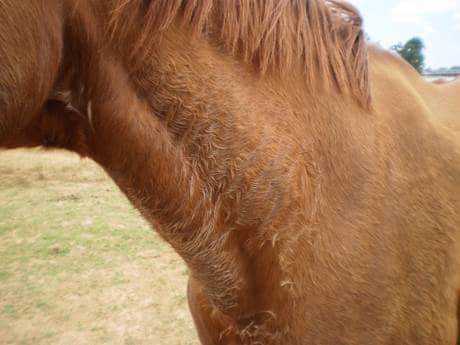Cushing’s Characteristics, Clinical Signs at Diagnosis

If you build it they will come. This is especially true if it’s a nationwide study on equine Cushing’s disease: Veterinarians and horse owners recently enrolled nearly a thousand horses of all breeds and ages showing one or more possible recognizable characteristics of the disorder also known by its more technical name as pituitary pars intermedia dysfunction (PPID). Researchers confirmed some suspected patterns and identified others they considered surprising in two scientific papers based on the data.
An enlargement of part of the horse’s pituitary gland is responsible for PPID, which causes release of a variety of hormones that upset the horse’s metabolic balance. The condition advances with age, so it’s best to catch and treat it early. However catching it early can be more difficult than it might sound, so veterinarians are digging for the simplest, most effective ways to identify PPID.
Steve Grubbs, DVM, PhD, Dipl. ACVIM, of Boehringer Ingelheim Vetmedica Inc. (BIVI), in St. Joseph, Missouri, and colleagues conducted the PPID epidemiological study, and Grubbs presented results at the recent 2015 American College of Veterinary Internal Medicine Forum, held June 3-6 in Indianapolis, Indiana
Create a free account with TheHorse.com to view this content.
TheHorse.com is home to thousands of free articles about horse health care. In order to access some of our exclusive free content, you must be signed into TheHorse.com.
Start your free account today!
Already have an account?
and continue reading.

Written by:
Stephanie L. Church, Editorial Director
Related Articles
Stay on top of the most recent Horse Health news with















